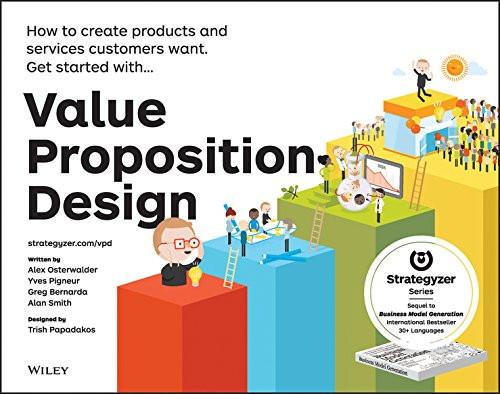Andrii Bondarenko's Key Ideas from Value Proposition Design
by Alexander Osterwalder, Yves Pigneur, Gregory Bernarda, Alan Smith
Ideas, facts & insights covering these topics:
11 ideas
·143 reads
2
Explore the World's Best Ideas
Join today and uncover 100+ curated journeys from 50+ topics. Unlock access to our mobile app with extensive features.
Elements of the Value Proposition Canvas
The Value Proposition Canvas has two sides: the customer profile (who your customer are) and the value map (how you create value for that customer). The goal is to achieve a fit between them.
10
19 reads
Customer Jobs
A customer job could be the tasks they are trying to perform and complete, the problems they are trying to solve, or the needs they are trying to satisfy.
- Functional jobs: completing a specific task or solving a specific problem.
- Social jobs: looking good, gaining status.
- Personal jobs: achieving a specific emotional state.
10
17 reads
Customer Pains
Pains describe anything that annoys your customers before, during, and after trying to get a job done or simply prevents them from getting a job done. Pains also describe risks, that is, potential bad outcomes, related to getting a job done badly or not at all.
10
16 reads
Customer Gains
Gains describe the outcomes and benefits your customers want. Some gains are required, expected, or desired by customers, and some would surprise them. Gains include functional utility, social gains, positive emotions, and cost savings.
10
15 reads
Don't have the Customer Profile yet?
You may begin exploring ideas by sketching out a profile based on what you believe your potential customers look like. This is an excellent starting point to prepare customer interviews and tests regarding your assumptions about customer jobs, pains, and gains.
10
15 reads
Fit
Fit happens in three stages:
- The first occurs when you identify relevant customer jobs, pains, and gains you believe you can address with your value proposition. That's the problem-solution fit.
- The second occurs when customers positively react to your value proposition and it gets traction in the market. That's the product-market fit.
- The third occurs when you find a business model that is scalable and profitable. That's the business model fit.
10
12 reads
Understand your customers beyond your solution
For example, a movie theater chain competes for customer attention not only with other movie theaters but also with a broad range of alternative options: renting a movie at home, going out to dinner, visiting a spa, or maybe even attending an online virtual art exhibit with 3D glasses.
10
11 reads
Prototyping
The practice of building quick, inexpensive, and rough study models to learn about the desirability, feasibility, and viability of alternative value propositions and business models.
7
9 reads
10 Prototyping Principles (part 1)
- Make it visual and tangible.
- Prototype “what can’t be done.” Don’t let existing knowledge get in the way of exploration.
- Don’t fall in love with first ideas — create alternatives.
- Early in the process the right direction is unclear. It’s a liquid state. Don’t panic and solidify things too early.
- Refined prototypes are hard to throw away. Keep them rough, quick, and cheap. Refine with increasing knowledge about what works and what doesn’t.
7
8 reads
10 Prototyping Principles (part 2)
- Seek feedback early and often before refining.
- Learn faster by failing early, often, and cheaply.
- Use creativity techniques. Dare to break out of how things are usually done in your company or industry.
- Create “Shrek models.” Shrek models are extreme or outrageous prototypes that you are unlikely to build. Use them to spark debate and learning.
- Track learnings, insights, and progress.
7
11 reads
Prototype skeleton
Our [product/service] help(s) [customer segment] who want to [jobs to be done] by [your value proposition].
Example:
Our book helps business professionals who want to improve or build a business by avoiding making stuff nobody wants.
7
10 reads
IDEAS CURATED BY
Andrii Bondarenko's ideas are part of this journey:
Learn more about books with this collection
Techniques for brainstorming and generating new ideas
The power of collaboration and feedback in the creative process
How to recognize and overcome limiting beliefs
Related collections
Discover Key Ideas from Books on Similar Topics
10 ideas
Zero to Sold
Arvid Kahl
5 ideas
Business Model Shifts
Patrick van der Pijl
9 ideas
Continuous Discovery Habits
Teresa Torres
Read & Learn
20x Faster
without
deepstash
with
deepstash
with
deepstash
Personalized microlearning
—
100+ Learning Journeys
—
Access to 200,000+ ideas
—
Access to the mobile app
—
Unlimited idea saving
—
—
Unlimited history
—
—
Unlimited listening to ideas
—
—
Downloading & offline access
—
—
Supercharge your mind with one idea per day
Enter your email and spend 1 minute every day to learn something new.
I agree to receive email updates
